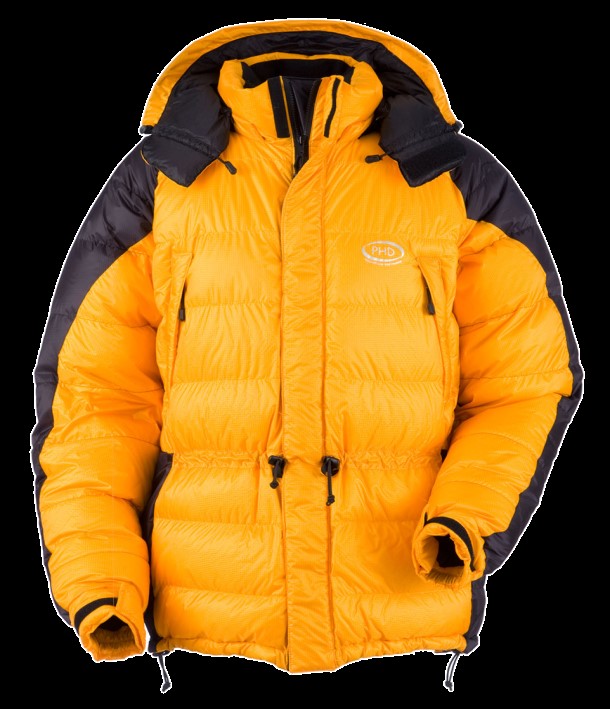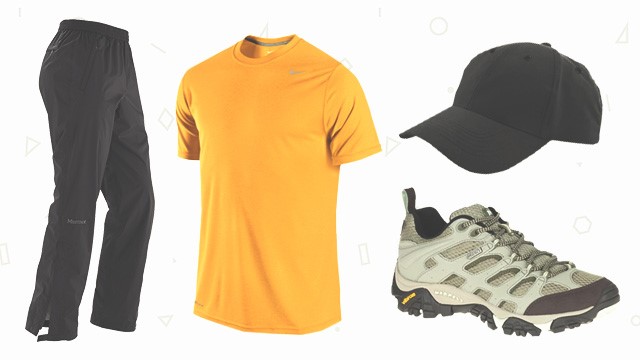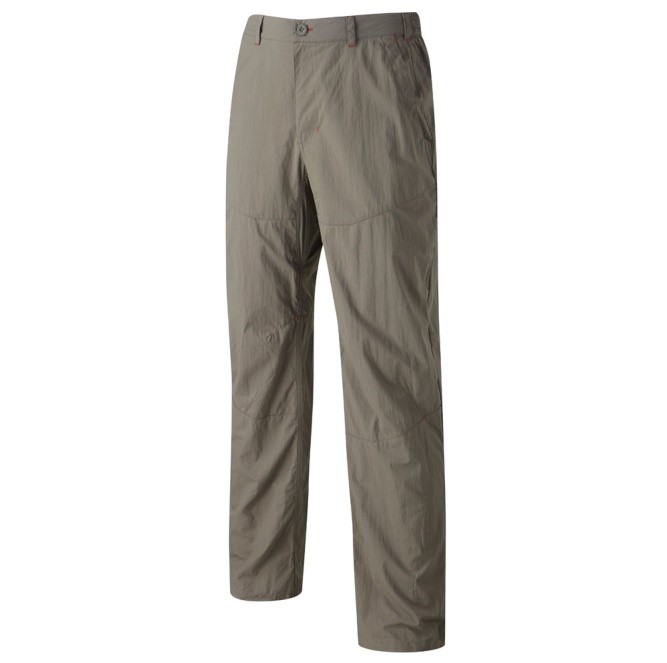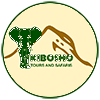Kilimanjaro Mountain
Trekking Tips
While a Kilimanjaro climb can be an exhilarating and fun-filled adventure, there are many dangers associated with high altitude climbing. Although the information below will help you plan and prepare for your Kilimanjaro or Meru climb, it is not a substitute for high altitude medical training or experience. You must be extremely cautious during your climb and inform the guide and others in the group of any altitude sickness you experience.
Altitude: Kilimanjaro and Meru
Altitude effects people differently and there are no specific factors such as age, sex, or physical condition that correlate with the susceptibility to altitude sickness. Most people can hike to 2,438 meters (8,000 feet) with minimal affect. If this is your first trip at altitude, it is important to be extremely cautious when hiking either Meru or Kilimanjaro. Altitude is commonly given three rankings of high, very high, and extremely high. The lower and upper boundaries of these ranks are shown in the table below.
High | 2,500 to 4,000 meters | 8,000 to 13,000 feet | Adaptation sufficient |
Very High | 4,000 to 5,500 meters | 13,000 to 18,000 feet | Adaptation not sufficient; acclimatization necessary. |
Extremely High | Over 5,500 meters | Over 18,000 feet | Acclimatization not possible; deterioration. |
The summit of Kilimanjaro, 5895 meters (19,340 feet), falls in the extremely high category and proper precautions should be taken to mitigate the risks of high altitude hiking. The highest camps of Kilimanjaro, Barafu and Kibo, fall in the very high category of altitude and hikers could experience severe signs of altitude sickness at these camps. Although Mount Meru is often viewed as an acclimatization hike for Kilimanjaro, its peak, 4,566 meters (14,990 feet), falls in the very high altitude category and hikers can also experience severe altitude sickness while hiking Meru.
What is Altitude Sickness?
Symptoms associated with altitude sickness result from the body’s inability to adjust to lower levels of oxygen in the blood. At sea level, the concentration of oxygen is about 21% and the barometric pressure averages 760 mmHg. As altitude increases, oxygen concentration remains the same but the number of oxygen molecules per breath is reduced due to lower barometric pressure. At 3,658 meters (12,000 feet), barometric pressure decreases to 483 mmHg, resulting in roughly 40% fewer oxygen molecules per breath. In order to increase oxygen levels in the blood, your body responds by breathing faster. Although oxygen levels increase, sea level concentrations cannot be reached. The body must adjust to having less oxygen. This adjustment is called acclimatization. At elevations above 5,500 meters, acclimatization is not possible and the body begins to deteriorate.
Acclimatization
The main cause of altitude sickness is going too high too fast. Given enough time, your body will adapt to the decrease in oxygen at a specific altitude. This process is known as acclimatization and generally takes one to three days at any given altitude. Upon climbing to a higher elevation, the body must readjust to the new altitude again over a period of one to three days.
In order to cope with decreased oxygen levels, the body reacts in the following ways:
•Respiration frequency and depth increases
•Pressure in pulmonary arteries is increased, “forcing” blood into portions of the lung which are normally not used during sea level breathing.
•Additional red blood cells are produced to carry oxygen
•Enzymes are produced to facilitate the transfer of oxygen from hemoglobin to body tissues.
It is imperative that hikers be aware of symptoms of Acute Mountain Sickness during Kilimanjaro and Meru trips and that they communicate with the guide regularly regarding their condition. It is very important to rest and not ascend further if experiencing severe symptoms of AMS.
Cheyne-Stokes Respiration
Above 3,000 meters (9,842 feet), most people experience a periodic breathing during sleep known as Cheyne-Stokes Respirations. The pattern begins with a few shallow breaths and increases to deep sighing respirations then falls off rapidly for a few seconds before shallow breathing begins again. During the period when breathing stops the person often becomes restless and may wake with a sudden feeling of suffocation. This can disturb sleeping patterns, exhausting the climber. This type of breathing is not considered abnormal at high altitudes. Diamox is helpful in relieving this periodic breathing.
Sick and Medication
MOUNTAIN SICKNESS & MEDICATIONS
About Altitude Sickness
If you are planning to climb Mount Kilimanjaro you will sooner or later hear about altitude sickness. For those unfamiliar with the ins and outs of altitude illness, here are answers to the most common questions regarding mountain sickness.
The definition of altitude
- High Altitude: 1500 – 3500 m (5000 – 11500 ft)
- Very High Altitude: 3500 – 5500 m (11500 – 18000 ft)
- Extreme Altitude: above 5500 m (18000 ft)
What is altitude sickness?
Altitude sickness is a range of symptoms that can occur when someone ascends to a high altitude too rapidly, without sufficient acclimatization. The body can adjust to the reduced air pressure at higher altitude, but only at a rate of about 300 m (1000 ft) altitude gain per day.
If you ascend faster, and everybody climbing Kilimanjaro will, then you may develop altitude sickness. There are three main forms of altitude sickness:
- AMS (Acute Mountain Sickness) is very common when climbing Kilimanjaro.
- HAPE (High Altitude Pulmonary Edema) is a fluid buildup in the lungs.
- HACE (High Altitude Cerebral Edema) is fluid buildup in the brain.
Both HAPE and HACE are potentially fatal but are thankfully extremely rare during a well-planned Kilimanjaro climb.
What exactly causes the individual symptoms of altitude sickness is still not fully understood. If you want to know more details, there is a link to an excellent tutorial at the bottom of this page.
There is also a range of other symptoms you are likely to experience during a Kilimanjaro climb due to the altitude. They are considered normal and shouldn’t worry you:
- You breathe faster,
- you are out of breath sooner,
- you may experience periodic breathing at night (where you stop breathing for up to 15 seconds, and then breathe very fast to make up for it, scary but harmless),
- you may wake up frequently at night,
- You need to urinate a lot more often.
None of those symptoms are altitude sickness.
What are the symptoms of altitude sickness?
The symptoms of AMS are headaches, loss of appetite, nausea, vomiting, sleeplessness, fatigue, dizziness. Everybody can expect to experience at least some of these symptoms in a mild form. The most obvious symptoms for HAPE are extreme breathlessness, even at rest; rattling breath, coughing with pink froth and blue lips or finger nails. HACE becomes apparent as a lack of coordination, inability to walk in a straight line, confusion and irrational behaviors (to the point of not acknowledging the symptoms).
How dangerous is altitude sickness?
The symptoms of acute mountain sickness as described above are self-limiting and not dangerous. In fact, your guides may tell you during the briefing not to worry, that it is totally normal to be throwing up repeatedly during that last final push top the summit. Nice… However, if you do experience symptoms, your guides should also keep monitoring you, because AMS can progress to one of the more severe forms of altitude sickness.
HAPE and HACE are potentially fatal! Make sure that you always remain in contact with your guides and let them know exactly how you are feeling. Also keep an eye on your climbing partners, since people suffering from these severe conditions may not be able to correctly assess their own condition. Anybody experiencing symptoms that could indicate HAPE or HACE needs to descend IMMEDIATELY or they will die.
But please don’t panic now. As I said above, these conditions are extremely rare, provided you act sensibly when on the mountain.
Who gets altitude sickness?
Anybody can get altitude sickness. There is no way to predict how your body will react if exposed to high altitude without proper acclimatization. Susceptibility to altitude sickness is random. Fitness is no protection. People who are extremely fit and exercise a lot get it just an easily as couch potatoes. There are many stories that indicate they may be even more susceptible!
Men appear to be more susceptible than women, especially young and fit men. (Competitiveness and the desire to show off plays a part in this. Men will often ascend faster. Too fast.) Older people seem to be less susceptible. (Older people will ascend more slowly, and nothing protects you better from altitude sickness than ascending slowly.)
When do you get altitude sickness?
Highly susceptible people can experience symptoms from 2500 m (7000 ft.) onwards, in rare cases even below that. The chance of developing AMS increases with the height but the rate of altitude gain is even more important. Mt. Kilimanjaro is 5895 m (19340 ft.) high. Pretty much everybody on a Kilimanjaro climb will experience some symptoms of altitude sickness during that last push to the summit.
There are other factors that increase the likelihood of altitude sickness, apart from the absolute height itself:
- Rate at which a height is achieved (the faster you ascend the bigger the risk of developing symptoms, this factor is more important than the absolute height itself!)
- Time spent at height (symptoms start appearing within 6-10 hours though they can be delayed)
- Physical exertion
- Dehydration
Symptoms of acute mountain sickness typically take one or two days to disappear. If you keep ascending they may not go away. For most people the symptoms come and go during the day, disappear overnight, only to come back the next day as the climb continues.
AMS can be very unpleasant, but with the right preparation and at a sensible pace, most people can climb to at least the last camp below the crater rim (around 4700m). It’s that last push to the summit where AMS becomes the make it or break it issue.
You climb Kilimanjaro with knowledge that every detail of your trip has been designed by one of the professional mountain guide and high altitude experts.
Our first goal
Your safety is our paramount concern on your Kilimanjaro trek. You leave home with the comfort of knowing that during your trek all you have to worry about is putting one foot in front of the other. We take care of the rest. Twice a day while on in the morning before you start your trek guides will monitor your lungs accomplish by using a stethoscope, and in the evening – our guides perform a thorough health check, using their specialized High Altitude Medical Paper and conjunction with pulse-ox meters. Regular medical checks help keep your Kibosho Tours guides informed about your condition, so that he can make informed decisions about your climb.
Trekking FAQ
What is the success rate of reaching the summit?
Although you can train for climbing Kilimanjaro to ensure you are in good physical condition, whether you manage to reach the summit could be decided by how well you react to being at altitude. There are drugs available that may help you with altitude sickness such as Diamox, or you could visit the Altitude Centre for an AMS susceptibility test. However the best way to increase your chances of reaching the summit is by spending as many days on the mountain as possible to allow your body time to acclimatize. You could also consider climbing Mount Meru before attempting Mt Kilimanjaro, but again this will not necessarily guarantee your chances of reaching Uhuru peak.
What food will be provided on the mountain?
Your porters will carry all of your food for the duration of the trip. Your meals will be prepared by you own cook and will consist of cooked breakfast, with tea and coffee. Either a packed lunch or cooked lunch at camp depending on the length of the days walking. Dinner is usually soup, followed by meat, or vegetables in sauce, with potatoes, pasta or rice. You will also have fresh fruit daily and more than enough food to keep you well fueled for the weeks walking.
Is the water safe to drink?
Apart from the first day when you will bring bottled water from the hotel for your first days walking, the porters will collect your drinking water daily from streams located near the camps. Although the water is generally clean enough to drink, your porters will boil enough water for your next day walking. You may wish to bring additional water treatment tablets, if you have a particularly sensitive stomach.
Water bottle or Hydration Bladder?
Everyone has their preferred method of carrying water in their rucksacks. There is no right, or wrong method; the most important thing is that you have the capacity to carry around 2 liters of water in your rucksack for a day’s walking. The bladder system encourages you to drink more frequently as it is easily accessible; however on summit night the tube and mouth piece are likely to freeze even with an insulated hose making it impossible to drink from. Bottles are often carried inside your rucksack and are not as easy to reach on the go, however bottles are less likely to freeze on summit night and can be placed in an inside jacket pocket to keep warm. We would suggest a combination of the 2; a 1-2 litre bladder for day-to-day drinking and additional storage for summit night and a 1 liter bottle for summit night and for evening use in camp. You may also wish to take a small flask so you have a hot drink for summit night.
How many days should I go for?
To increase your chances of reaching the summit of Kilimanjaro you should pick a route with as many days ascending as possible. The Lemosho and Rongai have the best acclimatization schedules allowing 8 and 7 days respectively.
Can I prevent AMS (Acute Mountain Sickness)?
Unfortunately there is no way of ensuring that you will not suffer from AMS as it affects everyone differently. The safest way to ascend to high altitude is by going slowly; the more days you have at altitude and the slower the rate of assent; the greater that chance you have of acclimatizing and ultimately reaching the summit. If you have had no experience of altitude climbing, or trekking; then you may wish to consider the Kilimanjaro treks lasting 7 days or more; such as the Lemosho route, or Rongai routes. In addition to this you should drink plenty of fluids and you may wish to consider taking medication such as Diamox and Ibuprofen to help treat the symptoms. Please visit the altitude sickness for more information.
What vaccinations do I need for Tanzania?
For information on health and vaccinations for Tanzania, please visit our vaccinations page.
Do I need a Visa?
Yes you will need to obtain a visa to enter Tanzania from the USA/ EUROPE. Please see our visa page for details. You should also ensure that your passport has at least 6 months before expiry when you arrive in Tanzania.
Who will take us up the mountain? We are Local Tanzania operator based in the base of the mountain. Our guides are among the best qualified and experienced on Kilimanjaro and unlike other operators, they are all Tanzanian. All the guides we use speak excellent English, and in addition to their knowledge and experience of Kilimanjaro they have received training in; first aid, mountain rescue, local flora and fauna, and history of the mountain and are registered with Kilimanjaro National Park (KINAPA). More information is available on our guides and porter page.
How much should I tip the guides and porters?
It has become customary to tip your guides and porters after completing your Kilimanjaro trek. However this is a tip and is not obligatory. We have provided a guide for how much you may wish to tip your staff; please view our tipping guidelines page for detailed recommendations on how much to tip each staff member.
Can I hire equipment in Kilimanjaro?
We would advise you to purchase all your equipment prior to arrival in Kilimanjaro, as there is no guarantee of the availability or quality of the equipment for hire at your hotel in Moshi. However hiring items such as trekking poles and gaiters which you may wish to have for this trek, but wouldn’t ordinarily use may be useful. The cost of hiring these items is in the region of; $10 per week for trekking poles and $7 per week for gaiters. If you have any issues with your luggage getting lost in transport then the majority of the kit that you would need could be hired from the hotel if required. We would highly recommend wearing 1 full set of clothes and packing essential items in your rucksack and using this as hand luggage, especially your hiking boots, as hiring poor fitting boots in Kilimanjaro could cause issues on the mountain.
What should I pack in my hand luggage?
To avoid any serious issues of your luggage getting lost in transit to Kilimanjaro; wear and carry as much of your essential items in your rucksack and use this as hand luggage. We would suggest that you wear a complete set of clothing including; socks and liners, trousers, long sleeve shirt, fleece and hiking boots. In your rucksack, pack as much additional equipment as possible such as; waterproofs, down jacket, sleeping bag liner, medications, camera, water bottle/bladder, spare underwear, spare laces, gloves, hat and all documents.
Where can I leave my valuables when on Kilimanjaro?
Essential items such as money, credit cards and passports can be left in the hotel before departing for Kilimanjaro. There are safety deposit boxes available for hire at $0 per day. We would highly recommend locking your valuables away before climbing to avoid them getting lost or stolen on the mountain. You may wish to take some Dollars or Tanzanian Shilling with you to purchase refreshments or souvenirs.
Do you have a question that you still need answered?
We have tried to include as much information as possible on this site, but we would be happy to answer any other questions that you may have, please get in touch we are here to help.
Trekking Gears
Equipment Required
We recommend the following individual equipment list for climbing expeditions. Your equipment will be checked by the guides before departure.
Please note: Whatever you bring in your luggage will be carried by a porter. Porters will only carry 20kg and no more so please make sure that this is all you have in weight. Basically, you will need to keep as warm and as dry as you can while climbing.
It is recommended that you wear layers of clothing which you can remove as you walk and heat up

Bags Required
1 Duffle bag or back pack to keep climbing items in (to be carried by your porter)
1 Day pack to keep items you will need on a day to day basis
1 Sleeping bag for extreme cold weather (-7 to -10 Celsius)
1 Sleeping bag liner
1 Over bag to keep bag dry
1 Pair of walking/trekking poles



Cloths Required
3 Pairs of Socks
3 Liner socks
3 Short sleeve shirts or t-shirts (Made from wicking material to keep you dry)
1 Gaiters
1 Light wool/warm hat
1 Fleece jacket
1 Gore – Tex shell jacket / wind proof jacket
1 Fleece or leather gloves
1 Gore – Tex mitten shell / gloves
1 Heavy trekking pants
1 Balaclava
1 Scarf
1 Sun hat with wide brim for sun protection
1 Tennis shoes/trainers to wear in camp
1 Mountaineering boots – please break your shoes in well before you come to Kilimanjaro
1 Waterproof jacket (with hood or rain hat) & trousers
2 Quick dry pants (preferably with zipper legs)
2 Long sleeved quick dry shirts
Misellaneous Items Required
1 Tube of sun block (SPF 30 or +)
1 Head lamp for summit ascent
1 Flashlight for camp use
1 Pair of sunglasses (better with nose guard & side covers)
1 Camera (including films and sufficient batteries)
1 Swiss army knife (optional)
1 2 Litre water bottle
1 Alarm clock
Luxury Items
Biscuits, Chocolate, Sweets, Nuts and Dried Fruits. Glucose Powder and other energy rich packs. Multi Vitamins (B, C, E, Iron and
